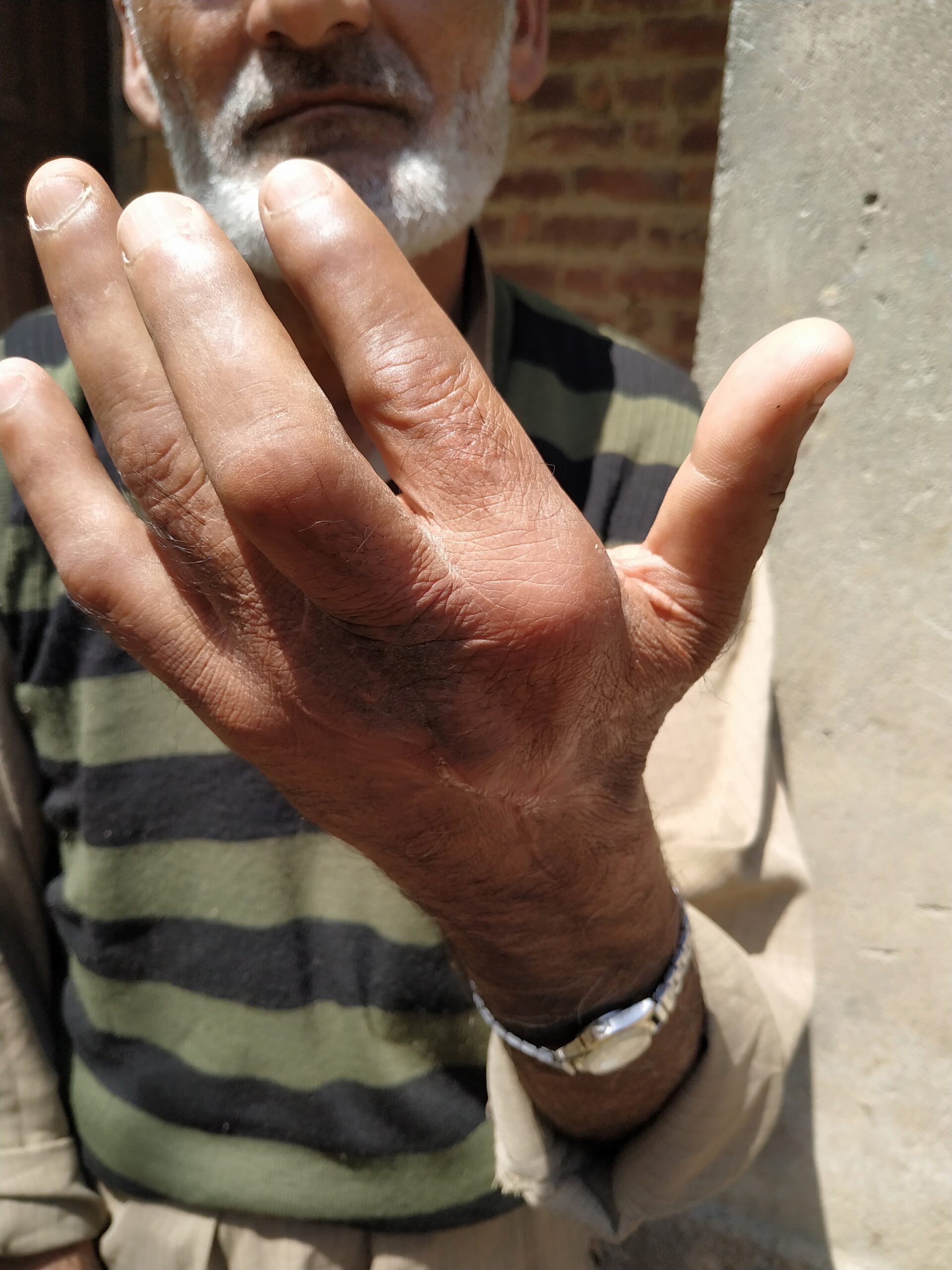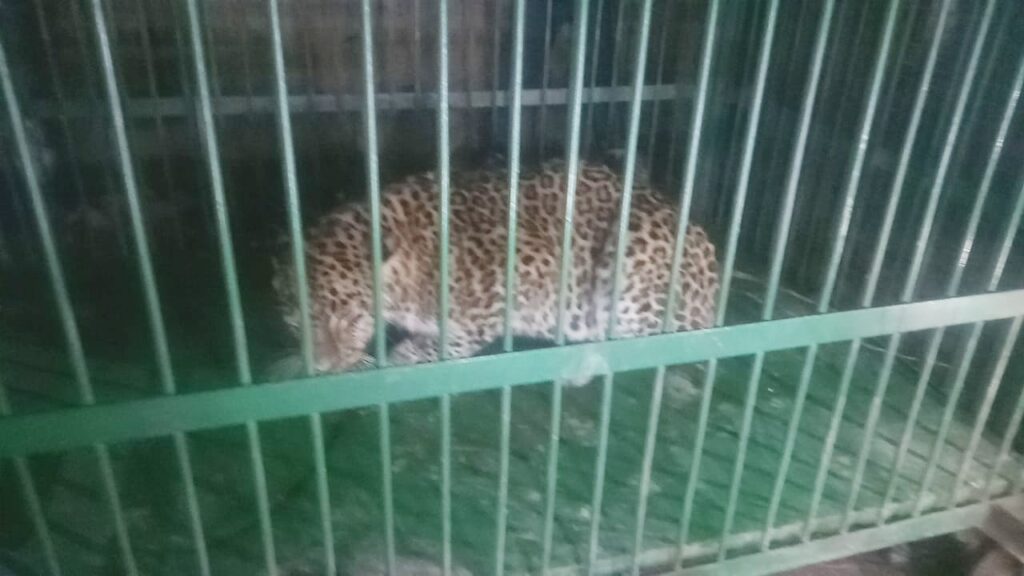Srinagar. Jammu & Kashmir.
On September 9, thirty-five-year-old Farooq Ahmad Gojjer was carrying on with his daily chores when a Himalayan bear attacked and critically injured him in Cherwan village, in Ajas, Bandipora district about 40 kilometres from Srinagar, in Jammu and Kashmir (J&K). Ajas, bound by mountains and coniferous forests, has been witnessing an increased incidence of human-wildlife encounters, claim local villagers.
About 100 kilometres away, at Khag, in the district of Budgam, another villager, Ghulam Qadir Sheikh, was attacked by a bear two months ago. He escaped with his life but was seriously injured. Four days later, a similar attack took place in Ganderbal district, about 40 kilometres away, when 38-year-old Abdul Rashid encountered a bear near his home, and a week later a bear killed a shepherd in Ramban district of J&K.
These are just some of the reported cases of increased incidence of human-wildlife conflict in the Kashmir region of J&K, which, claim experts, is on the rise due to a combination of factors.
“As cultivation and construction eat up forest lands and upset the fragile ecological balance, wild animals, such as bears and leopards, stray into human settlements in search of food causing conflict,” Aqleem ul Islam, a wildlife researcher with the Department of Zoology, University of Kashmir, told Gaon Connection.

Orchards in the region with their dense foliage in summers provide enough cover for the wild animals to move around undetected, particularly the black bear, said Intisar Suhail, wildlife warden of the Shopian district. “In recent years there has been a horticulture boom, over and above the maize cultivation by the tribal community living in the vicinity, and the bears thrive on this,” he informed Gaon Connection.
Jostling for space
According to the data from the Wildlife Department, J&K government, about 3,390 persons were injured and 229 were killed in human-animal conflict in the Valley between 2006 and 2019, with incidents peaking in the cold winter months. This means in the last 13 years, every year at least 17 people died and another 261 were injured due to the human-wildlife conflict.
Meanwhile, in the 10 years between 2008 and 2018, there were 144 animal casualties reported in Shopian and Pulwama districts alone. Construction of roads, setting up of transmission lines and an increase in lands under cultivation have encroached into the natural habitat of wild animals forcing them to stray into human settlements.
The attacks have left in its wake, traumatised families and loss of livelihood.
Three months ago, as Abdul Rashid was walking to work around one morning, a bear attacked him, leaving him with face and head injuries. Ever since, the manual labourer from Ganderbal district, has been unable to go to work, and is worried about his blind mother whom he takes care of. He has been visiting the hospital for these months but he hasn’t improved much and is “still sick,” he told Gaon Connection.

“There has been a sharp rise in human-animal encounters,” said Bashir Malik to Gaon Connection. The sixty-five-year old who lives in the picturesque Sedow in Shopian district, falling under the southern wildlife division in South Kashmir, survived a bear mauling just metres away from his home in 2018. Saved by his neighbours he stayed in hospital for 45 days, he recounted the traumatic episode.
“The animal was hidden inside the maize crop. I didn’t see it till it attacked,” said Malik who is still unable to use his arm. Malik is one of 1,108 persons injured in the South Kashmir division between 2008 and 2018, confirmed the J&K Wildlife Department. Sixty others lost their lives.
A section of the ancient Mughal road runs a few kilometres on one side of Sedow and as it was being relaid, hundreds of pine and deodar trees were felled. The village lies a few kilometers away from the Hirpora Wildlife Sanctuary, and the construction activity has disturbed the fragile ecology of the area, leading to increased landslides and human-wildlife encounters.

Orchards rise and so do the ‘encounters’
“Decreasing forest cover and the increased cultivation of maize, apples and other fruits in the vicinity has changed the food habits of the Himalayan bears that have developed a fondness for the fruits,” Srinagar-based Aaliyah Mir of Wildlife SOS, a non-profit in Delhi, explained to Gaon Connection.
According to Islam, shrinking forests have led to increased sightings of black bears and leopards near human settlements, and contributed to the increasing number of wildlife encounters in the area. Animals are also damaging fruit trees and fruits in the autumn season, complain the villagers.
“The disturbance and destruction caused by blasting through the biodiversity hotspot has affected the alpine habitat pastures of the area,” Reyaz Ahmad, project head of Wildlife Trust of India’s Markhor Conservation Project based in Anantnag, told Gaon Connection.
“Due to the loss of pastures along the road, pressure of livestock of the migratory nomads has increased on the remaining pastures,” added Ahmad. During the harvesting season hundreds of fruit laden trucks ply through the road unregulated that puts additional burden on the ecology, he said.
The power transmission line has further fragmented and degraded the habitats. According to Ahmad, the construction company used bulldozers illegally to construct link-roads to lower construction sites, instead of using the existing path to transport labour and construction material.
This has led to jostling for space and food between humans and wild animals. In recent years, local inhabitants along the forest areas have encroached into forest land in search of pastures for their domestic animals or carry out agricultural activities, adding to the encounters, said Ahmad.

Unable to find enough to eat in the forests, animals venture out, get attacked by the local villagers and even killed. For instance, in the first week of April this year, a picture of a leopard being skinned by some residents in Damhal Hanjipora, Kulgam district, went viral on social media. The animal had injured several people leaving the inhabitants feeling threatened and angry. The wild cat was killed before the wildlife officials could recapture it and release it in the forests. “Many times it is just a case of people showing off their ‘heroism’ on social media,” Mir told Gaon Connection.
Compensation woes
In 2006, the then state government announced a scheme to compensate those killed or injured in human-animal encounters. This encouraged proper reporting and documentation of cases. Under the scheme, the next of kin of those killed in the encounters get Rs three lakh and those injured get Rs one lakh. Since 2006, under the compensation scheme, the government has settled 203 cases, disbursing around Rs 2.85 crore to the next of kin and Rs 5.06 crore to those injured.
But the process is turning out to be time consuming, and sometimes takes months for the compensation to reach the victims. Bashir, who was attacked by a bear in 2018 in Shopian district, received the compensation a year later, after repeated trips to the wildlife office with his medical documents and receipts.
Meanwhile, Rashid, who was injured earlier this year in his village in Ganderbal district, is still running from pillar to post. “I have nearly spent Rs 90,000 for my treatment till now. I have received nothing from the government,” said Rashid adding that his neighbours had helped him.

The biggest flaw with the 2006 compensation scheme is that it does not cover loss of livestock, leaving shepherds and others dependent on them to fend for themselves. For instance, last March, leopards killed Basheer Ahmad Malik’s flock of 40 sheep, a direct loss of Rs six lakh for the resident of Chak Masjid Reshnagri in Shopian district.
“My life’s savings were devoured in one night,” Malik told Gaon Connection. He was initially promised compensation by the officials but later informed there was no compensation for loss of livestock, he lamented.
The forests across the valley have borne the brunt of political turmoil, as well, often becoming zones of pitched battles. The forests provided cover to insurgents. Many security camps came up within them too. Officials, off the record, say that the animals are also attracted by the waste these camps generate.
Interestingly, whereas the experts claim there has been an increased activity in forest areas in the Kashmir region leading to high incidence of human-wildlife encounters, official records show an increase in the forest area of the Union Territory. As per the Forest Survey of India’s State of Forest Report 2017, over 56 per cent of the Union Territory’s area is under forests. There has been an increase of 253 square kilometres forest cover as compared to the State of Forest Report 2015. The 2017 report attributes this net increase to “plantation and conservation activities as well as improvement in interpretation due to better radiometric resolution of the recent satellite data.”


















